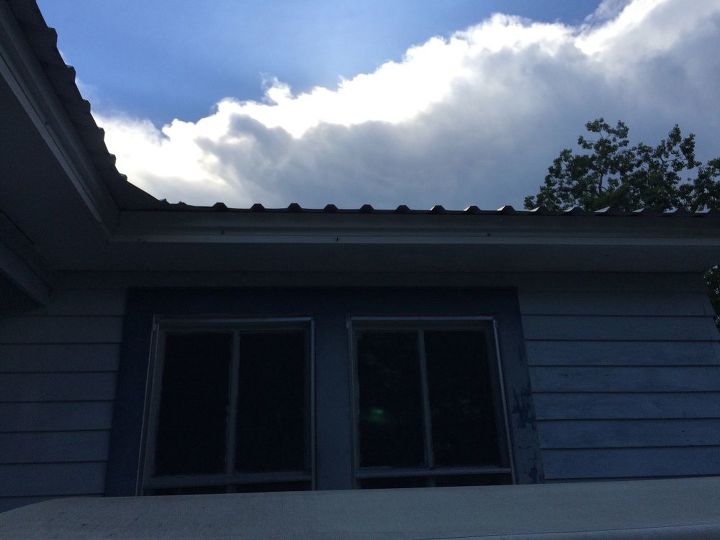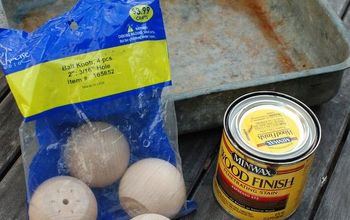How to create a flower bed

-
I believe all mulch floats, No Float Cypress tries not to move, they also have rubber mulch now that would be an alternative, mulch is to break down over time and nourish your soil. I always use a heavy dose of mulch. Roses need their feet cold and tops warm so I go deep by 4 inches to protect . If you have pots they will love the extra moisture around their bottoms. Pots dry out fast so they will love love the heavy dose of mulch.
 Kathy B
on May 15, 2016
Helpful Reply
Kathy B
on May 15, 2016
Helpful Reply -
-
Water will pool on plastic since there is no drainage. I would remove the plastic, since it serves no purpose. Replace with landscape fabric, which is porous, or heavy layers of newspaper; then mulch.
 Carol O
on May 15, 2016
Helpful Reply
Carol O
on May 15, 2016
Helpful Reply -
-
Yes, weed block or landscaping fabric is the only way to go. It allows the moisture from rain or hose to go right through it plus it doesn't cause the mulch to slip and slide. I wanted a small strip of lawn off of the patio but, because of the drought conditions, we opted for an eight by 22 foot section of mulch with three large potted plants to add interest. It has been there over a year and no problems except I did have to add more mulch (as it breaks down) and some weeds do come up from it even though I sprinkled Preen over the area first.
 Bonny McDaniel
on May 15, 2016
Helpful Reply
Bonny McDaniel
on May 15, 2016
Helpful Reply -
-
@Emily DeFamily you could remove the plastic or you could also use a nail to punch many holes in the plastic - would be less labour intensive. I find if you have enough mulch on the surface (at least 4 inches the first year). Since the mulch is going to decompose you will have to replenish every year - I use about 2 inches each new season. I haven't used anything underneat - just removed the grass and then mulched. I find even the fabric cover allows plants/weeds to grow through it over time.
 Gail Salminen
on May 15, 2016
Helpful Reply
Gail Salminen
on May 15, 2016
Helpful Reply -
-
Only time plastic should be used is to cook the weeds and their seeds and never as a cover under mulch! I never use landscape fabric either- it is awful mess to clean out when the plants try to spread and grow. Please remove the plastic because you will have nothing but problems! 4" of mulch willhelp you control weeds and help your soil. if you have landscape fabric or plastic the mulch just sits there even though it does slowly decompose it is not adding to your soil to enrich it for your plants. I rarely have to pull weeds and my perennials can spread to their hearts content and smother the weeds. the previous owner of my home used landscape fabric and plastic and 8 years later I am still finding it as it creeps to the surface of my yard and gardens. There is no such thing as a no weed garden- but if you pull the weeds before planting and then cover with mulch and refresh the mulch each year, weeding is not that bad
 The Garden Frog with C Renee
on May 15, 2016
Helpful Reply
The Garden Frog with C Renee
on May 15, 2016
Helpful Reply -
-
Just remember that as the mulch breaks down, there will be weeds there as they are often wind blown---but a lot easier to remove as the roots don't have anything to sink into.
 Cathy
on May 16, 2016
Helpful Reply
Cathy
on May 16, 2016
Helpful Reply -
Related Discussions
GNATS - How to get rid of them?
Somehow my house and garden got tiny gnats that killed my fuchsia plant and fly everywhere. I have tried ALL the Web recommendations - soap and oil dishes, sand in th... See more
Marigolds growing! Should I pinch the buds?
My marigold plants are growing. I heard that pinching the buds until Autumn will allow them to grow without killing the plant. Is this true?
Growing garlic
Growing our first garlic, should we wait until the leaves are drying out before we pick it? Husband picked first one today along with our first potatoes.
How to keep mice out of your garden?
Hi everyone, I have mice in my garden destroying my vegetables and I have also noticed them in the barn and shed. Please can someone tell me how to prevent them from ... See more
What's the best flower/plant to grow in Texas?
I know that opinions vary, but what's your opinion?!I have great luck w Rosemary plants. Green all year long.
Rocks in my flower bed a 100 of them
I have tried everything and can't get an plant to grow. There is just so many rocks. What can I do to have a flower bed of flowers and plants? I would appreciate any... See more
Is a flower bed possible?
Is a flower bed possible due to rain runoff? Rain water falls off the front of my home and gutters aren't possible. Would love to have a flower bed in front of my hou... See more



